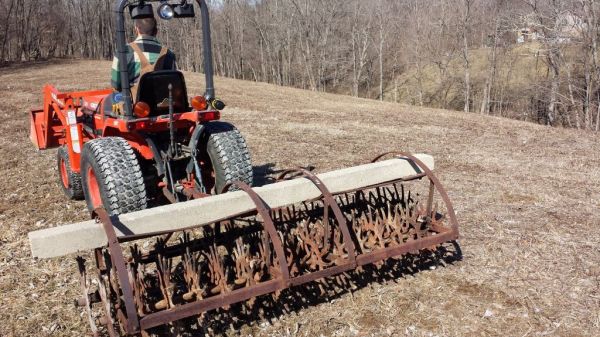I’ve been wanting to set up a very portable observation hive for a few years. To date, I have borrowed them from fellow beekeepers to do bee education presentations for various groups. Since I didn’t want to wear out my welcome with the generous people who have loaned them to me, I finally have one ready to add bees to.
After seeing, and using various styles of observation hives, I settled on the style I found best for what I am doing. This style stacks two deep frames and two medium frames inside a case which I think is the perfect cross-section of a typical Langstroth hive. There’s little place for the queen to hide once I take the covers off. Some fold-away feet turn on central pivots on the bottom to make a stand while it’s off the dock.
A simple piece of tin slides under the front door in some grooves to block the entrance coming in from the bottom-center before un-docking the hive. Both this piece of tin, and the doors are fastened with screws so no one can open it while it out in the public.
When the feet are turned out, they will be clamped to the table for extra stability. There are multiple vents on the top, and two sides to allow good air circulation. Two blinds, one for each side were made out of foam insulation, that I’ll plan to paint black, or add a layer of cardboard to ensure it’s dark inside while the sides are on and the hive is not in use.
Most importantly, I wanted to be able to park the observation hive at home, and let the bees reside in it all season. Being able to rob out an occasional frame of brood, or honey to bolster another hive while keeping the observation hive from swarming is an added benefit.
Of course, parking the hive outside, I also want to keep it out of the direct elements so it doesn’t wear out so fast. The solution for me was to build a dock off the front of my south-facing chicken coop. The overhang from the roof above comes out far enough to keep most of the rain off it, but yet it still gets plenty of sun to help thwart hive beetles.
For the dock, I wanted to emulate the typical landing board of a langstroth hive. This allows any bees that were out and about before I closed it off and took it to congregate until the hive returns. The idea would be, returning the hive to its position at the end of the day would allow the bees that have gathered, or bearded on the landing board to find their way into the hive.
The observation hive sits on top of the dock and a 1.5″ PVC pipe comes out of the dock and into the bottom center of the observation hive. You would sit the hive on the pvc pipe, then a pair of handles on the top of the hive engage with some latches at the top. This holds the hive in place on the dock (see pictures in gallery).
I took the liberty of making the entrance travel off to one side so that I could stand in front of the hive and latch/unlatch it when I’m docking it. Straight to the other side of the dock is an area that accommodates a feeder jar if needed. It’s screened off with #8 hardware cloth and can be left open without a jar. So, the bees come into the entrance on the left, travel through PVC that has been roughed up on the inside (for traction). They can choose to go up and into the hive, or straight to the feeder area. The feeder area is located well away from the entrance and the entrance hole has been left a reasonably small size. See the pictures in the gallery for more detail.
I think it will work very well and we’ll just see. I hope I give someone else some ideas or encouragement to finally build the observation hive they have been thinking of. See a video of the virgin queen tearing down a another capped queen cell with some other worker bees below the pictures.
What are some of your thoughts on the ideal observation hive?































































